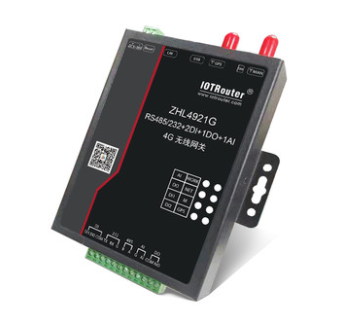Gateways, routers, and switches are also devices that connect to the network, but they have different functions and uses. First, let’s understand what gateways, routers, and switches are.
gateway
Simply put, a gateway is a device that connects two networks. Many LANs now use routers to access the network, so now the gateway usually refers to the IP of the router. Gateways can be used in homes or small businesses to connect LANs and the Internet, and there are also wireless communication gateways for industrial applications.
router
A router is a computer network device that provides two important mechanisms: routing and forwarding. It can determine the routing path from the source end of the data packet to the destination end. This process is called routing; the data packet at the input end of the router is transferred to the appropriate router. The output end is called forwarding (transmission). The 4G industrial router is a high-speed industrial IoT router that is fully compatible with 4G/3.5G/3G/2.5G networks. It has VPN links, industrial-grade protection and wide temperature setting correction, and can easily form high-speed and stable wireless transmission. network, using the public LTE network.

switch
Switch means “switch” and is a network device used for forwarding electrical (optical) signals. It can provide an exclusive electrical signal path for any two network nodes connected to the switch. The most common switch is an Ethernet switch. Other common ones include telephone voice switches, fiber optic switches, etc.
What is the difference between gateways, routers and switches?
1. Concept
A switch is a network device that forwards electrical (optical) signals, a router is a computer network device (a router cannot handle optical signal sources), and a gateway is a device that connects two networks. The gateway can move between different protocols. Data, and routers move data between different networks, which is equivalent to the traditional IP gateway.
2. Working principle
The switch has a high-bandwidth back bus and internal switching matrix, which quickly transmits data packets to the destination port through the internal switching matrix; the router provides two important mechanisms: routing and forwarding; the gateway can forward data packets between networks, but the host cannot Forward the packet.
3. Function
Switches are usually used to build Ethernet and are widely used in Layer 2 network switching, commonly known as “Layer 2 switches”; routers have the function of connecting different networks and selecting lines for information transmission; while gateways connect two networks Equipment, for voice gateways, the gateway can connect to the PSTN network and Ethernet.
4. Connect the device
Switches can connect to a variety of devices, including network devices (such as switches, routers, firewalls, wireless APs, etc.) and terminal devices (such as computers, servers, cameras, network printers, etc.). The router and gateway have a single connection object.
5. Network protocol
The switch uses the MAC (Multimedia Access Control) protocol, while the router protocol is relatively widely used. As for the gateway protocol, the TCP/IP network communication protocol is mostly used.
The above is the introduction and difference between gateways, routers and switches.
